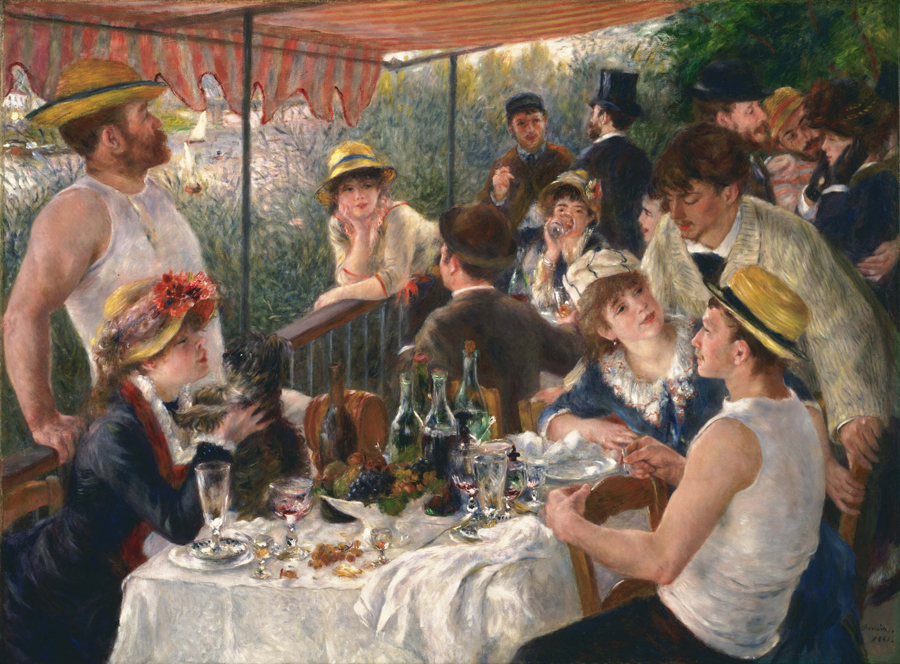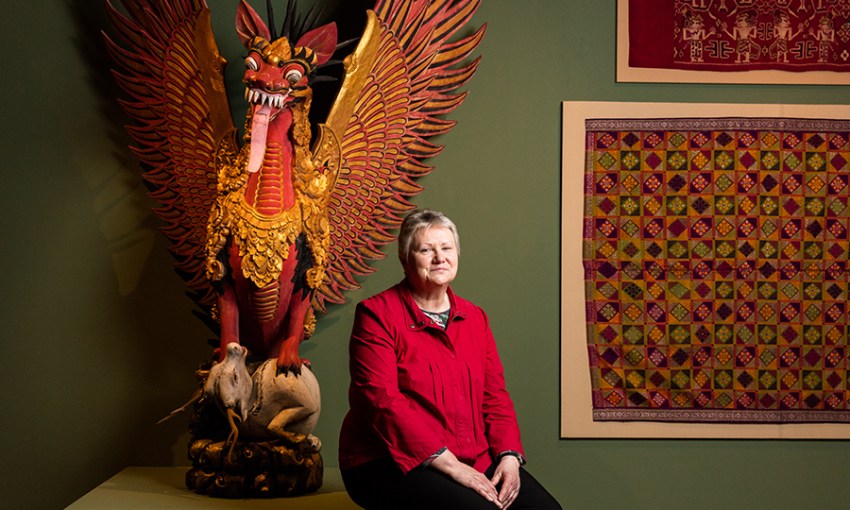Working under the past four directors of the Art Gallery of South Australia, including Rhana Devenport, the institution's first female in the role, Lindsay Brookes sheds light on the various characters and circumstances of her career.
My Adelaide with Lindsay Brookes
“So I left school and started work in 1970. I’ve been working for 48 years. I started at the Art Gallery of South Australia in March 1987,” she says.
“I started work for six months as a temp, working on the Great Australian Art Exhibition, which was the Bicentennial Touring Exhibition. That got extended to a year and I just made myself indispensible. This is what you want to do when you’ve only got six months and you realise you really like the place. Daniel Thomas was the first director of the Art Gallery I worked under – not that I worked directly for Daniel. I worked for the Deputy Director and Ron Radford, who was the curator of paintings and sculpture. Ron became director in late 1990 and I became assistant to the director in 1991. I’ve been there ever since.
“From Ron it was then Christopher Menz and then Nick Mitzevich and now, Rhana Devenport.
“There was another director who was David Thomas. When he left there was a bit of an uproar – a lot of factions within the institution. Daniel was sort of brought in as a moderator, a figurehead because he did have a very good reputation interstate at the Art Gallery of New South Wales and the National Art Gallery of Australia. But Ron was the day-to-day person who took care of the acquisitions, took care of the donors, organised how the gallery would look. He ripped up the shag pile carpet and laid parquetry. There was shag pile carpet. In the Art Gallery of South Australia. And it was pale, off-white shag pile carpet. This was the 70s into the early 80s. Ron changed the wall colours through the Elder Wing from white to red.
“Old Masters: New Visions was my first big exhibition. There was the Philips collection from Washington DC. They were closing their building. There were renovations so they sent the masterpieces on a tour. I can’t remember which other countries it had gone to but the main painting was Renoir’s painting: ‘Luncheon of the Boating Party’ and it’s huge. It is huge. Everyone came in to see the Renoir and they’d be 12-deep just looking at it. That’s what really resonated with me when I first started here. It was ’88 or ’89. I could go up there by myself. Stand in front of that painting. No one else around, and you think, ‘Wow, I’m not 12- deep, I’m here by myself, seeing these masterpieces because I work here. Brilliant’.

Luncheon of the Boating Party, Pierre-Auguste Renoir, 1881, Oil on canvas, 129.9 cm × 172.7 cm, The Phillips Collection, Washington, DC
“When I go through the Elder Wing, I always check out if Tom Roberts, ‘[Winter morning after rain,] Gardiner’s Creek’ is on display. I don’t know why. It’s the bridge, it’s the black beams Ron used to liken to Whistler – and that Roberts was influenced by Whistler and it showed. And I’ll look for also Conder with his ‘Holiday at Mentone’. I learnt a lot from Ron – it was amazing.

Winter morning after rain, Gardiner’s Creek, Tom Roberts, 1885, Oil on canvas, 47 cm x 66 cm, M.J.M. Carter AO Collection, Art Gallery of South Australia, Adelaide

A holiday at Mentone, Charles Conder, 1888, Oil on canvas, 46.2 cm × 60.8 cm, Art Gallery of South Australia, Adelaide
“Then of course you see a gallery like the Mary Overton Gallery, or Max Carter Gallery. Max is still alive and I met Mary but she died some years ago. It’s interesting to meet them, to know them and then see a gallery named after them because of their level of giving. The name won’t be changed on those galleries. It shouldn’t be changed.”




